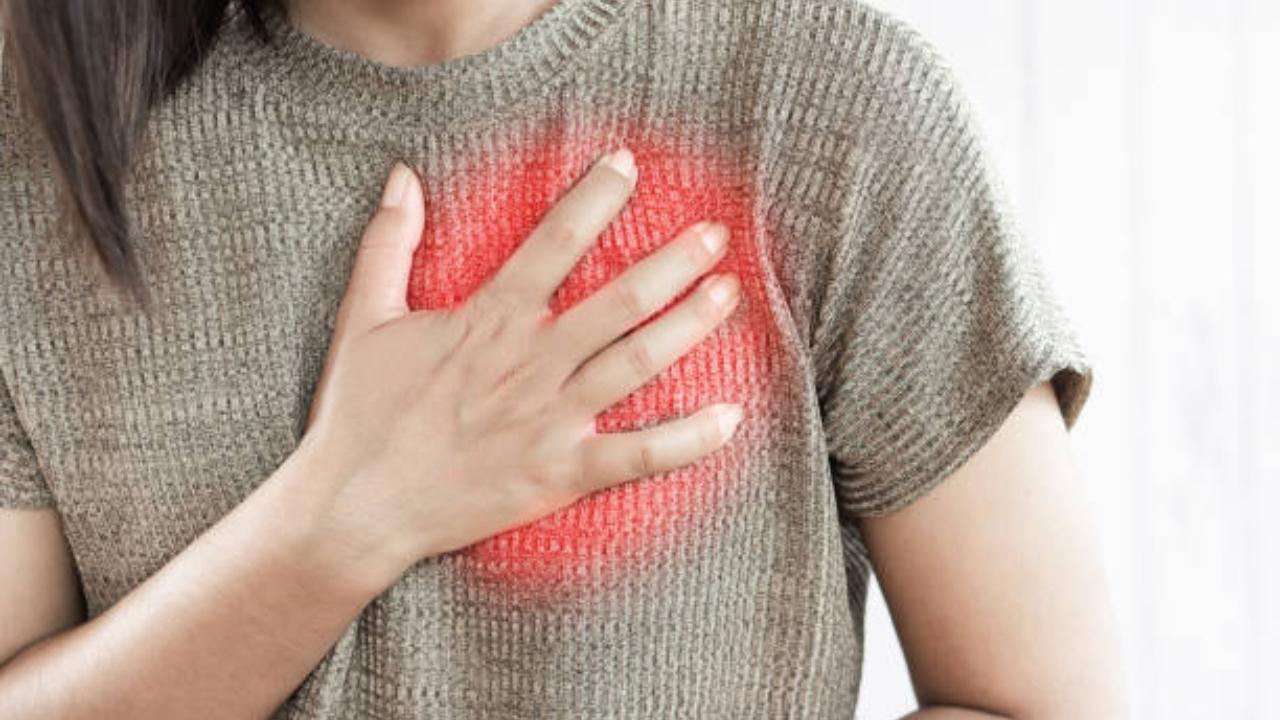When the aorta's wall weakens, it can dilate to twice or even three times its normal diameter, creating a significant risk of sudden rupture, which can result in immediate death, or lead to aortic dissections, another severe complication

Image for representational purposes only. Photo Courtesy: iStock
Aortic aneurysms, which is often asymptomatic, is the third leading cause of sudden cardiac death, said experts on Sunday stressing the need for raising awareness on the fatal heart condition.
ADVERTISEMENT
Aortic Aneurysms are the ballooning of the major blood vessel aorta, which carries blood from the heart to the whole body.
It affects approximately 2 to 3 per cent of the population, but the risk increases with certain factors like atherosclerosis (collection of cholesterol in the blood vessels), hypertension, and generic deficiency in certain patients.
"Aortic aneurysms represent a critical yet under-recognised health concern that ranks as the third leading cause of sudden cardiac death, trailing only behind heart attacks and cardiac arrests," Niranjan Hiremath, a senior consultant cardiovascular and aortic surgeon at Indraprastha Apollo Hospital, New Delhi, told IANS.
"When the aorta's wall weakens, it can dilate to twice or even three times its normal diameter, creating a significant risk of sudden rupture, which can result in immediate death, or lead to aortic dissections, another severe complication,” he added.
In India, awareness about cardiac risks predominantly revolves around heart attacks and cardiac arrests, but the dangers posed by aortic aneurysms have not received comparable attention.
"The lack of awareness is concerning, especially considering that about 75 per cent of aortic aneurysms are asymptomatic and go undetected until they present a sudden, life-threatening emergency. These aneurysms are often discovered incidentally during examinations for other medical conditions," Niranjan said.
"Most intact aortic aneurysms do not produce symptoms. As they enlarge, symptoms such as abdominal pain and back pain may develop. Untreated, aneurysms tend to become progressively larger and can present with life-threatening complications," added Shiv Choudhary, Executive Director - Adult Cardiothoracic; Vascular Surgery, Fortis Escorts Heart Institute, Okhla Road, New Delhi.
Aneurysms can develop in any segment of the aorta, but most commonly affects the abdominal aorta. The experts noted that genetic predispositions, trauma or infection, and tobacco can also contribute to the risk of aortic aneurysms.
It "weakens the wall of the aorta and finally leads to aortic rupture. In rupture, massive internal bleeding happens, and, unless treated immediately, shock and death can occur. The other fatal complication is a dissection of the aorta. In dissection, the layers of the wall of the aorta are split. This can result in mal-perfusion to the brain or visceral organs or eventual rupture. In both situations emergency intervention is warranted," Shiv told us.
Open surgery used to be the major form of treatment. Recently, there has been a paradigm shift to minimally invasive techniques of endovascular stent implantation, which is associated with low risk, minimal morbidity, and low mortality, (Surg Cmde) V S Bedi, NM Chairman; Senior Consultant Institute of Vascular & Endovascular Sciences, Sir Ganga Ram Hospital New Delhi, told us
"The aneurysms are required to be treated once the size of the aorta increases to more than 5cm because an increase of more than 6cm can cause sudden leak/rupture which can be fatal," the doctor added.
The experts also advised strict control of blood pressure for patients with the condition and prohibition of tobacco in any form. Patients with diagnosed aneurysms should avoid intense physical sports and isometric exercise but can walk and indulge in light aerobic exercises.
This story has been sourced from a third party syndicated feed, agencies. Mid-day accepts no responsibility or liability for its dependability, trustworthiness, reliability and data of the text. Mid-day management/mid-day.com reserves the sole right to alter, delete or remove (without notice) the content in its absolute discretion for any reason whatsoever
 Subscribe today by clicking the link and stay updated with the latest news!" Click here!
Subscribe today by clicking the link and stay updated with the latest news!" Click here!







